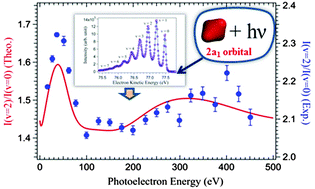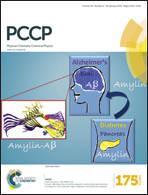Photoelectron diffraction in methane probed via vibrationally resolved inner-valence photoionization cross-section ratios
Abstract
Vibrationally resolved photoionization of the 2a1 orbital in methane has been studied both experimentally and theoretically, over a wide range of photon energies (40–475 eV). A vibrational progression associated with the symmetric stretch mode of the 2a1−1 single-hole state was observed in the experimental photoelectron spectra. Individual vibrational sub-states of the spectra were found to be best modeled by asymmetric line-shapes with linewidths gradually increasing with the vibrational quantum number. This indicates the occurrence of a pre-dissociation process for the involved ionic state, discussed here in detail. Finally, diffraction patterns were observed in the vibrational branching ratios for the first three vibrational sub-states (“v-ratios”) of the experimental photoelectron spectra. They are found to be in excellent qualitative agreement with those obtained from ab initio models. Compared with previous studies of the 1a1−1 core–shell photoionization of methane, the period of oscillation of the v-ratios is found to be very different and the phases are of opposite signs. This suggests a strong interplay between the electron diffraction and interference effects inside the molecular potential.



 Please wait while we load your content...
Please wait while we load your content...